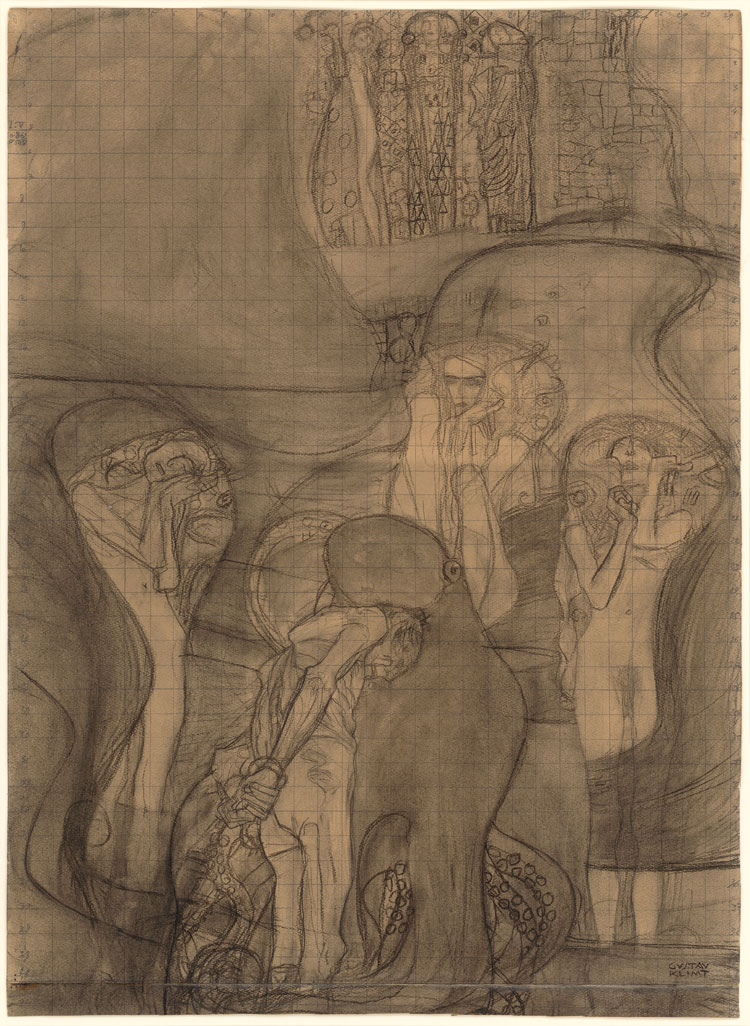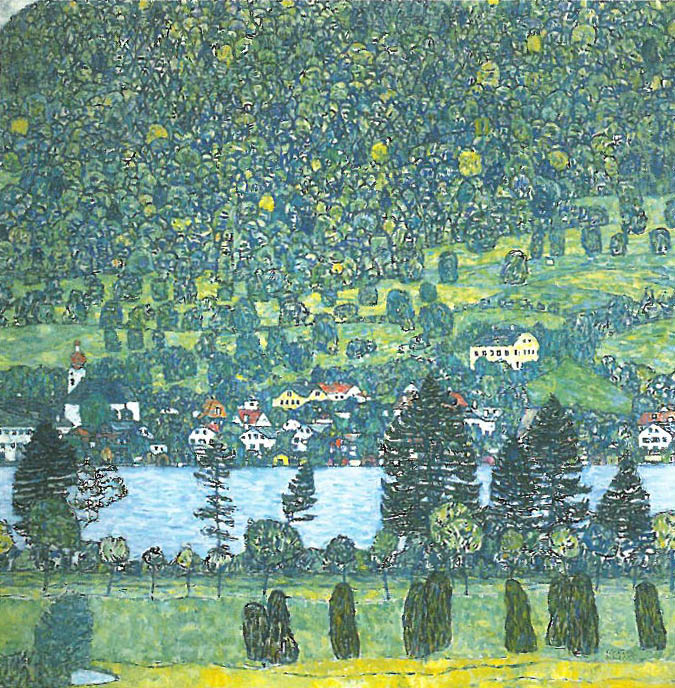Whitehot Magazine
October 2025
"The Best Art In The World"
"The Best Art In The World"
October 2025
July 2012: Gustav Klimt: 150th Anniversary Celebration
 Gustav Klimt, Trander drawing for Jurisprudence/Jurisprudenz, 1902-03, Black chalk, pencil. Private Collection, NY
Gustav Klimt, Trander drawing for Jurisprudence/Jurisprudenz, 1902-03, Black chalk, pencil. Private Collection, NY
Gustav Klimt: 150th Anniversary Celebration
Neue Galerie
1048 5th Avenue
New York, NY 10028
May 24 through August 27, 2012
Gustav Klimt is in good company on his 150th birthday, sharing the year with Claude Debussy and Georges Darien, among others. Eight museums in Austria are preserving his legacy by highlighting varied factions of his life and practice. The Neue Galerie in New York, dedicated to Austrian and German art since its opening in 2001, is joining the initiative. Although the offerings are slim in comparison to the range of work in Vienna, they offer an overview of Klimt's pioneering spirit and the evolution of his practice.
A room of drawings elucidates Klimt's transitional period in the late 1890s through early 1900s, spurred by a desire to transcend his academic training at the Vienna School of Arts and Crafts. Detailed portraits in pencil and chalk highlight the draughtsmanship that made him so attractive to the Viennese government in the last 1880s. These public commissions, however, were victim to the shifting culture via industrialization in Vienna. Medicine (1900-1907), Philosophy (1899-1907), and Jurisprudence (1897-98) were proposed as additions to the ceiling in the Great Hall at the University of Vienna. The communal outrage at the proposals nixed the entire project, which was riddled with nudity and departed from traditional symbolic imagery. Klimt's drawings for the proposal reflect an artist in the midst of both stylistic and psychological change. Lusty nudes, denied the emotionally ravishing faces of his earlier drawings, appear in several sketches. Klimt strove to engage spectators with these fields of study rather than represent them, thus devising a novel aesthetic language. The language of dress was also a prime focus of Klimt's, which shifted from rigidity to draped, formless garments. Seated and standing drawings of Adele Bloch-Bauer portray a woman swimming in fabric, with understated curves but a lush, feminine presence. One can feel Klimt's excitement for this new woman in his loose, lyrical scrawls. These sketches, which also include the controversial Beethoven Frieze (1902), implicate a man emerging from his cave.
Klimt sought to refresh aesthetic verbiage by channeling the purity of extremes, including decoration, sexuality, and change. With the government's support gone, he embraced his Id and started the Vienna Secession in 1897. With 18 other comrades, they strove to uncover the "naked truth." Klimt predominantly painted portraits and landscapes after 1900. Although Adele Bloch-Bauer I (1907) is the self-proclaimed masterpiece at Neue Galerie, The Dancer from 1916-18 provides insight into Klimt's vision over time. The green and fuchsia pattern on the female's robe flattens her visibly curvy figure. Her face is calm but inquisitive, perhaps fresh from an afternoon nap or recent sexual conquest. Depth is disfigured, implying a shallow room that contains six robed, anonymous figures in the background. Forest Slope in Unterach on the Attersee (1916) is a landscape that presents a similar union between decoration and depiction. Klimt's view is stationed opposite Unterach am Attersee, a small town in Austria. The rolling hill becomes a sheet of moss, green-yellow, and cerulean tree tops. The trees are a mass in themselves, united by the Impressionist technique and optical illusion of flatness. The Vienna Secession disbanded in 1908, but Klimt's later works summarize his flashier "Gold Period." He constructed an outlook that was both objectively beautiful and sensitive to the aura of a particular person or place. By mixing and matching optical obstacles with beauty, Klimt created works that were dually controversial enigmas and desired centerpieces.
Klimt's social circle, including fashion designer and companion Emilie Flöge, was a subliminal source of inspiration for the artist. The Neue Galerie displayed photographs that present his fascination with fashion and segments of his everyday life. A photograph from 1912 of Klimt in front of his studio has been a prominent focus for press materials, and with good reason. His revelrous and playful nature are unmistakeable, denoted by a shrewd grin and the awkward cat he holds in his arms. The image resonates with his coy voyeurism, instigating thoughts of what other tricks could have resided beyond his billowy sleeves.
 Gustav Klimt, The Dancer/Die Tänzerin, 1916-18, oil on canvas, Private Collection, NY
Gustav Klimt, The Dancer/Die Tänzerin, 1916-18, oil on canvas, Private Collection, NY
 Gustav Klimt, Forest Slope in Unterach on the Attersee/Unterach am Attersee, 1916, Oil on canvas, Private collection.
Gustav Klimt, Forest Slope in Unterach on the Attersee/Unterach am Attersee, 1916, Oil on canvas, Private collection.
 Image 10: Moritz Nahr, Gustav Klimt in front of the entrance to his studio at Josefstädter Strasse 21, 1912, Gelatin silver print, private collection.
Image 10: Moritz Nahr, Gustav Klimt in front of the entrance to his studio at Josefstädter Strasse 21, 1912, Gelatin silver print, private collection.

Lynn Maliszewski
Lynn Maliszewski is a freelance writer and aspiring curator/collector residing in New York City. She can be reached at l.malizoo@gmail.com
PHOTO CREDIT: Benjamin Norman (www.benjaminnorman.com)









